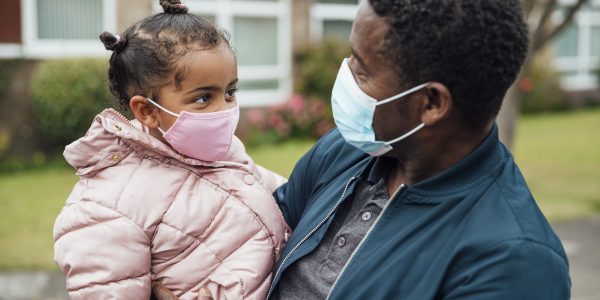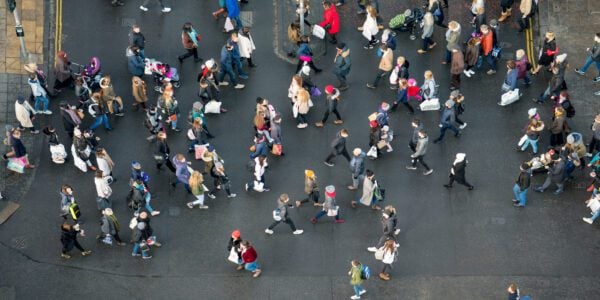Soaring energy costs will lay bare Britain’s longstanding failure to better insulate its housing stock, with families living in EPC E-rated or worse homes set to face annual heating bills at least £320 higher than those living in EPC C-rated homes when the price cap jumps in April, with the total cost at £3.9 billion, according to new Resolution Foundation research.
Shrinking footprints from The Economy 2030 Inquiry, a collaboration with the LSE, funded by Nuffield Foundation – examines how the next stage of the UK’s net zero transition will directly affect families via the homes they live in, the cars they drive, and the food they eat.
By far the biggest areas of decarbonisation over the next decade will come via residential buildings (to fall by 44% by 2035) and surface transport (a 64% reduction by 2035).
While the focus has been on the kit used to reduce emissions in these areas – such as Battery Electric Vehicles (BEVs) and heat pumps – the most significant challenges will be delivering the less glamorous infrastructure around these technologies – an accessible charging network and home efficiency upgrades – to ensure that everyone benefits from using them.
The government’s ‘prime-pumping’ strategy of requiring new builds to have heat pumps from 2025, while subsidising some wider early adoption, should boost take-up and help achieve the target for heat pump costs to equal those for gas boilers by the end of the decade – a target backed by industry experts.
But heat pumps are less effective in poorly insulated homes, and 80 per cent of the investment in home insulations will be needed by 2035. Despite this urgency, the number of roofs and walls being insulated today is down 90% on a decade ago. As such, a clear priority is to reverse the previous decade of abject policy failure on home insulation.
Poorly insulated homes have always cost more to heat, but the scale of this ‘leaky homes surcharge’ will surge when the energy cap rises in April. Families living in the UK’s 4.2 million E-rated homes will face bills that are £320 a year higher than those in C-rated homes, while families living in the 1.5 million F-G-rated homes will face a surcharge of £390. The total cost across all D-G-rated homes will be £3.9 billion.
The government does have a plan – albeit a very challenging one – to better insulate private rented accommodation by requiring properties to attain a C-rating by 2028. But no such plan exists to cover the two-thirds of households who own their homes.
This is a particular challenge for low-income homeowners, says the report, 72% of whom will need their homes improved, and where the potential cost of insulation upgrades (£8,600) are just £500 less than their annual after housing costs incomes (£9,100).
On transport, the report notes that the rapid take-up of BEVs shows that the UK is well-placed to make progress on reducing emissions, and delivering significant cost savings for road users.
For example, the cost of charging a BEV via public charging points is – at £712 a year – 25% less than the equivalent cost (in terms of mileage) of filling up a petrol car (£1,100 a year). Charging costs can be further reduced through home-charging (£389), and overnight home-charging (£139).
However, these huge cost differences risk creating a new ‘charging divide’ – as those without off-street parking (such as private renters) will miss out on hundreds of pounds of annual savings compared with home-owners (81% of whom have off-street parking, compared with 51% of private renters).
The government will need to address this ‘charging divide’ – where it costs some families five times as much to charge their cars – by reducing and regulating public charging costs, and incentivising landlords to install home charging points.
Finally, the report notes that reducing emissions from aviation and food will require significant behavioural change in the years ahead. The government need not rush to put up the price of (carbon-intensive) meat, given that poorer households spend more of their household budgets on food, and people are already reducing their consumption significantly.
However, higher prices are more likely to be needed when it comes to flights, given the longer term trend of rising demand. But with richest tenth of households flying as frequently as the poorest half of households combined, even excluding business trips, it should be possible to discourage flying without disproportionately affecting low-and-middle income households.
Jonny Marshall, Senior Economist at the Resolution Foundation, said:
“Until now, Britain’s net zero transition has largely been hidden from households. This will change in the 2020s as our carbon footprints are reduced via the homes we live in, the cars we drive, and the food we eat.
“Much of the focus has been on take-up of low-carbon technologies like electric vehicles and heat pumps. But the key to their success will ultimately depend on delivering the infrastructure around them – such as better insulating Britain’s housing stock.
“This long-term insulation challenge will be brought home to households very soon when energy bills rise by 50% in April. Almost six million households will face a £320 ‘leaky homes surcharge’ on their energy usage as a result.
“It is vital that the government ramp up progress in insulating homes and reducing the costs of public charging points for electric vehicles so that the whole of society can benefit financially from a low carbon economy.”






















































